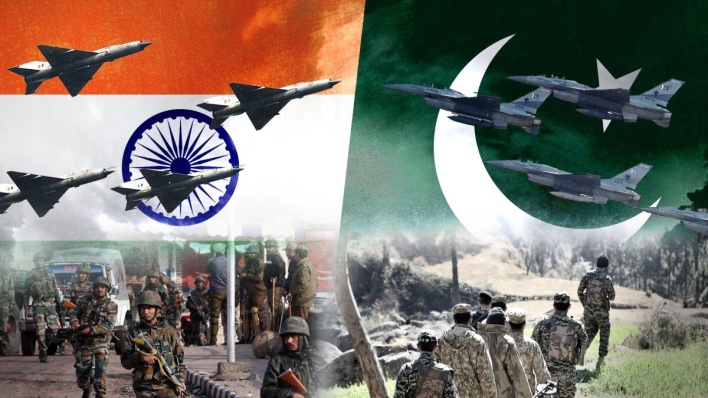
Tensions Continue To Rise Between India, China, And Pakistan
December 26, 2020 in China / Conflict / Current Events / India / Pakistan by James Laforet (updated on December 26, 2020)
Hostilities between China and India have been rising once again since April, and this July, Chinese and Indian soldiers clashed along their shared Himalayan border in the strategically important Galwan Valley. 20 Indian and five Chinese soldiers were killed in hand-to-hand fighting, with both sides blaming the other for initiating the battle. (Reports of barbed wire-wrapped metal rods and nail-studded clubs could indicate premeditation rather than an escalated misunderstanding.) Another recently-surfaced report claimed that in August, China used a high-energy electromagnetic radiation weapon system to force Indian troops to retreat from two strategic hilltops. The microwave-like attack reportedly caused troops to vomit and left them unable to stand after fifteen minutes. Neither encounter violated the no-live-fire rule in place since 1962.
There is a long history of tension and violence between India and China. In 1962, the two countries fought a short war along the Himalayan border after India gave asylum to the Dalai Lama following the 1959 Tibetan uprising. In September and October 1967, the two sides clashed again in Nathu La and Cho La. In 1975, Chinese soldiers killed four Indian soldiers in Tulung La. According to Indian authorities, the Chinese forces deliberately crossed the border in order to ambush them – allegations which China denied. In 1986, a tense standoff occurred between the two as both sides massed large numbers of troops along their shared border, causing analysts to fear the situation would escalate to all-out war. In 2013, Ladakh’s Depsang Bulge area saw a 21-day standoff, and in 2017, a 72-day standoff occurred after Indian troops moved in Bhutanese Doklam to prevent China from extending a road further South into Doklam. The confrontation ended peacefully, and both sides withdrew.
Over the past several years, China has invested over $70 billion into Pakistan as part of its Belts and Roads initiative, an effort to control important trade routes and increase its economic and political clout. Some analysts are reporting that China has indicated it wishes to heavily invest into the Kashmir region, between India and Pakistan. This would likely increase tensions.
India and Pakistan have disputed ownership of Kashmir since Britain’s hasty retreat from the area in 1947, when the countries established their independence. The two sides fought a short, but bloody, war over the region, with India securing two thirds. This set the stage for a protracted, and sometimes deadly, standoff.
In 1965, a 17-day war between the two, including the largest tank battle since World War II, resulted in thousands of casualties. In the early 1970’s, interventions by both parties in Bangladesh fuelled another clash. The Kargil War began in 1971 when Pakistan occupied the Indian-controlled Kargil area, prompting India to respond militarily. Intense pressure from the international community persuaded Pakistan to withdraw from the region. Pakistan’s departure ended that conflict, but smaller clashes along Kashmir’s border have resulted in many casualties, including the deaths of civilians.
China, India, and Pakistan all have nuclear arms, and perhaps the threat of mutually assured destruction will hold these forces in limbo. However, any nuclear attack will have devastating lasting impacts on civilian populations. The international community must make every effort to ensure that this conflict does not evolve, An independent third party may be vital in facilitating peaceful resolutions to these decades-old conflicts.
Author
Recent Posts

James Laforet
James Laforet holds an MA in Public Policy and Administration from Ryerson University and has a background in history and philosophy. He joined the OWP to help promote awareness of ongoing crises worldwide. He is particularly concerned with how climate change will exacerbate conflicts and believes that investments in climate adaption technologies will be key in mitigating future crises.
No comments:
Post a Comment